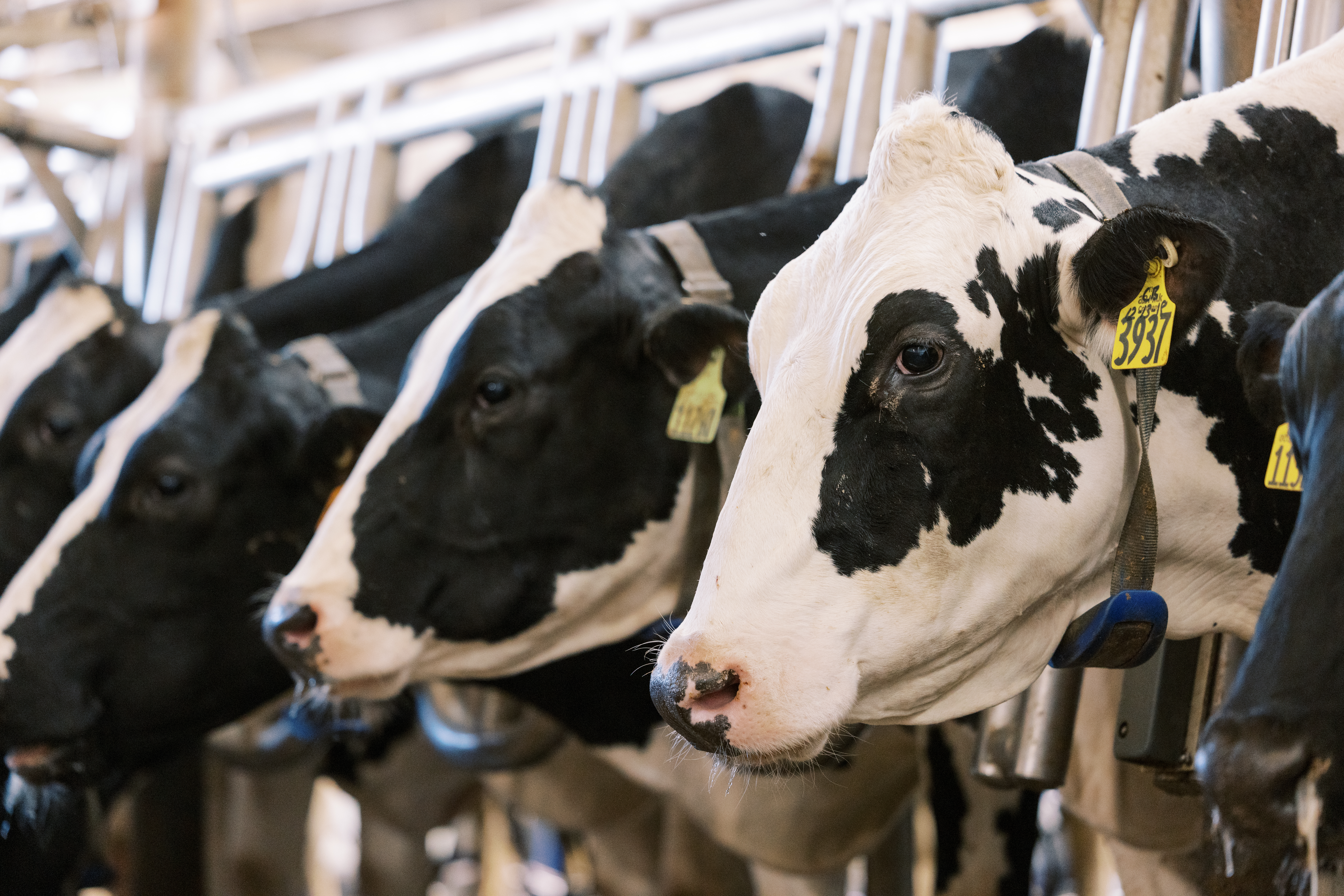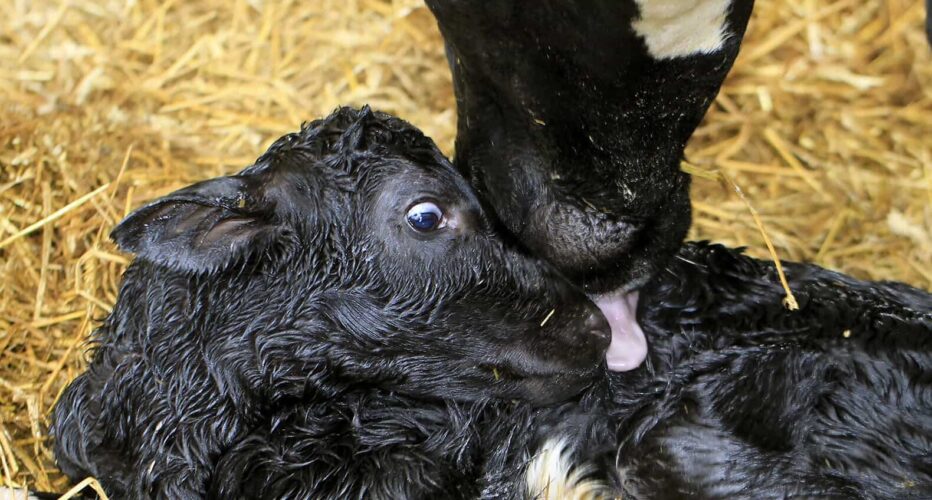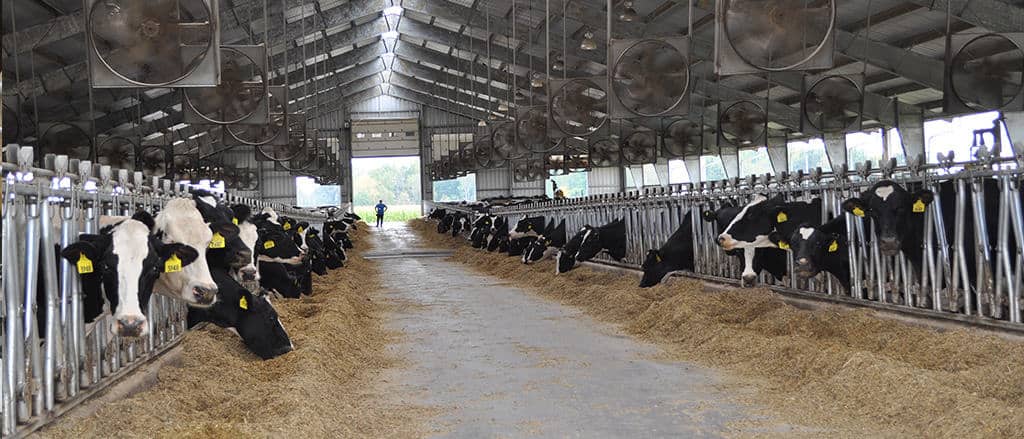In April 2025, the US dairy genetic base was updated to reflect the amount of genetic progress made since the last base change five years ago.
What is a base change and why do we need it?
A genetic base change is when the average PTAs (Predicted Transmitting Abilities) of cows born in a specific year are set to zero to more accurately reflect what’s happening on today’s farms. The base was previously set to zero for all cows born in 2015. In April 2025, the genetic base shifted to include all cows born in 2020.
This short video, created by the National Association of Animal Breeders (NAAB), gives a clear and concise explanation of what a base change is, and why we need it.
What changes happened in April 2025?
As an industry, we have made a LOT of genetic progress on dairy farms across the US. That means that we will need to adjust to a new norm for trait values, because the value for many traits have rolled back by a significant amount.
This table outlines the base change updates for the Holstein and Jersey breeds. You’ll notice that the base change for PTA Milk in the Holstein breed is 752 pounds. That means that all males and females will now have proof values 752 pounds lower than their current proof value.
This does not mean that the animals are worse than before. This shift is because all animals are now being compared to the new base of cows born in 2020, which is genetically superior to the base of cows born in 2015.
Will all animals in the industry experience the same change?
Yes, regardless of which company or farm an animal comes from, the genetic base has been updated by the same amount for all animals.
Any other changes seen will be attributed to the NM$ Index update or newly added daughter information.
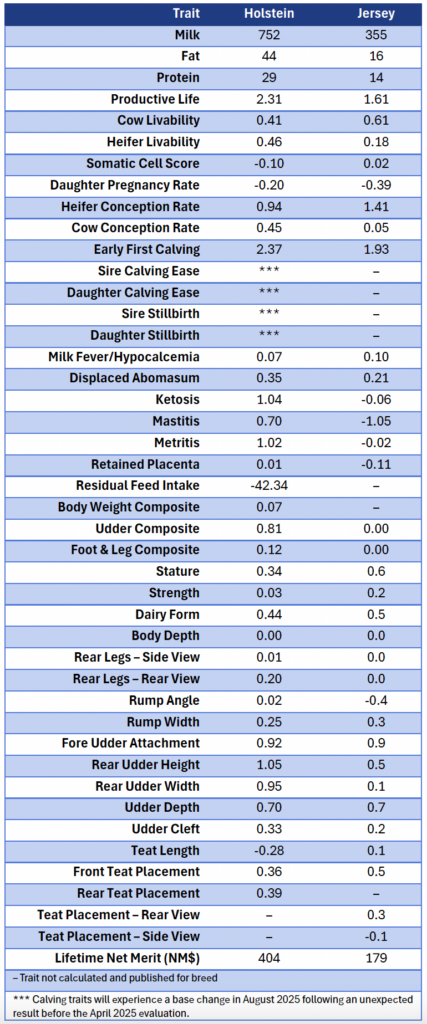
How does this genetic base change compare to previous base changes?
We’ve made more genetic progress in the past five years than during any other five-year span in recent history.
The charts below show the base change numbers for 2025, 2020, 2015, and 2010. As you can see from the charts, the base change in 2025 is significantly more for most traits than it was for previous base changes.
That means we’ve made more progress over the last five years than during any other five-year span in recent history.

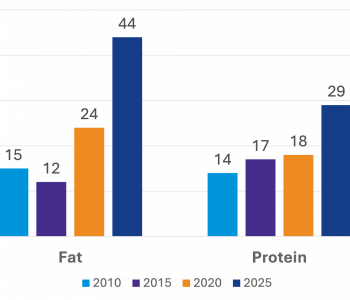
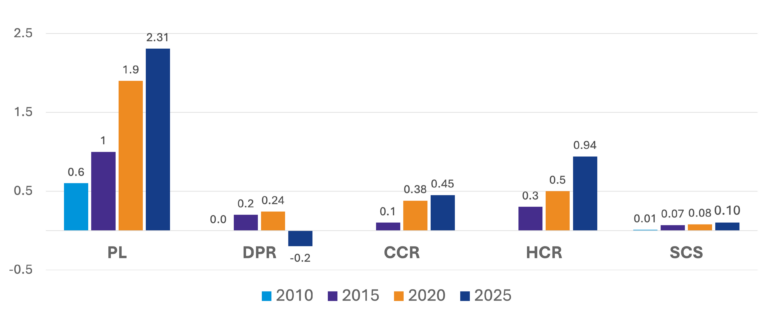
What does this mean for your farm?
This historic genetic base change is simply proof of the genetic progress that we are making as an industry. The rollbacks for most traits are at unprecedented levels because a cow’s genetic capability to produce more milk, fat, and protein, and to live a longer, healthier life has improved so significantly.
However, it will require a shift in mindset when you look at new proof values. If you are used to a genetic average of 1000 pounds of Milk for the sires you use, you will now need to reset your expectations on that same group of bulls to 250 pounds – because of the 750 pound base change for milk. If you are accustomed to a Productive Life average around 6.0, it’s important to reset your expectation to around a 3.5 average, because of the 2.5-month rollback for this trait.
What about calving traits?
It should be noted that the calving trait base change will not take place until August 2025 because of unexpected results leading up to April 2025 proofs. That means that the genetic base and expected proof values for Sire Calving Ease, Daughter Calving Ease, Sire Stillbirth, and Daughter Stillbirth will remain unchanged until this update in August.
Where can you find more information?
The Council on Dairy Cattle Breeding is an excellent resource for sharing news and information related to updates on the genetic base change. Find that information here: https://uscdcb.com/basechange. You can also work with your Alta advisor to better understand the new trait norms and base change updates.


